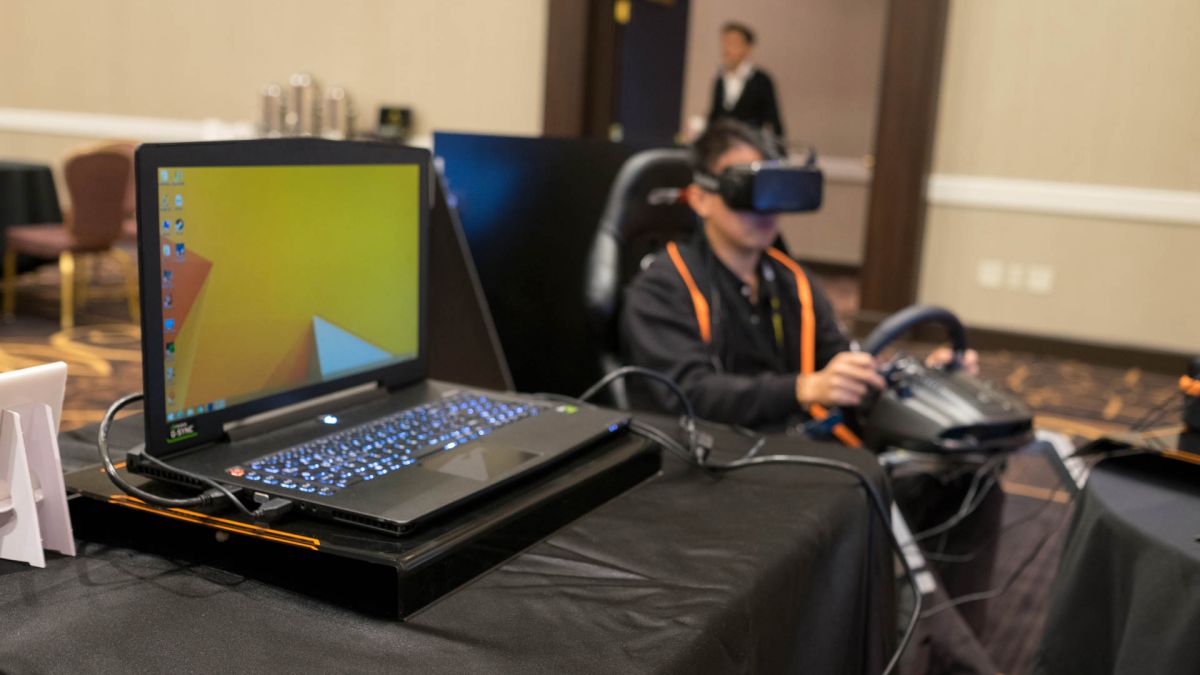
Best VR Laptops
If you want to explore virtual worlds in their highest fidelity, but don’t have room for a PC, you’re going to need a powerful laptop.
This is the year of VR. Oculus Rift, HTC Vive, and now PlayStation VR are all scheduled to release in 2016 (with the former already here), bringing virtual reality out of the realm of ’90s cyberpunk fantasies and into our homes.
No matter how you slice it, however, VR is still cutting-edge, pricey tech. The barrier for entry into the virtual world is, at minimum, about $700 (about £619, AU$1,029) for a PS4 and a PlayStation VR headset.
Taking virtual reality to the next level with a PC headset costs considerably more, with the Oculus Rift headset priced at $599 (£499, about AU$1,100 with shipping) and the HTC Vive at $799 (£689, about AU$930 with shipping).
None of those costs include a VR-capable PC.
Eventually, prices will come down as the technology bends to the will of Moore’s Law. For now, early adopters will need to pay a hefty toll to cross the bridge into the VR space, and those who want to take their headsets on the road should brace for the costs associated with a VR-ready laptop.
If you’re dead set on a portable VR experience, we’ve got a guide to help you pick out your beastly new computer. Both the Vive and Oculus require some pretty solid specs, so the laptops on this list are definitely built for the enthusiast with deep pockets.
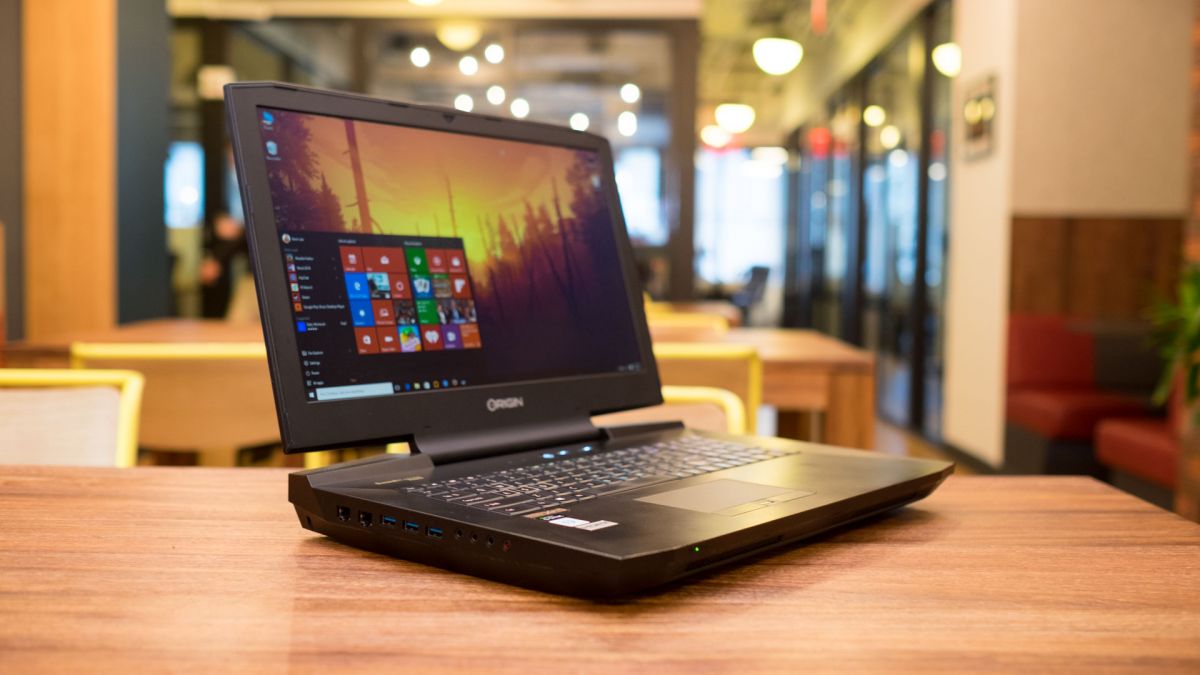
1. Origin EON17-SLX
This powerhouse won’t have any troubles handling VR
CPU: 4GHz Intel Core i7-6700K | Graphics: NVIDIA GeForce GTX 980; Intel HD Graphics 530 | RAM: 16GB DDR4 | Screen: 17.3-inch Full HD (1,920 x 1,080) IPS with G-Sync | Storage: 256GB SSD; 1TB SSHD
See more Origin EON17-SLX deals
Desktop GPU with plenty of video RAM Weighs 10.5 pounds Another battery guzzler
The Origin EON17-SLX has room to breath when it comes to powering a VR headset. Inside the EON17-SLX is a desktop-grade GeForce GTX 980 chip with 8GB of VRAM and one of Intel’s new Skylake processors, the i7-6700K, running at 4GHz. The laptop made mincemeat of our benchmarking tests, running GTA 5 on Ultra at a respectable 41 fps at 1080p.
However, all that power comes with great responsibility, meaning you’ll be responsible for not using it more than 2 hours without plugging it in. The virtual reality dream can be experienced away from home, just not for very long.
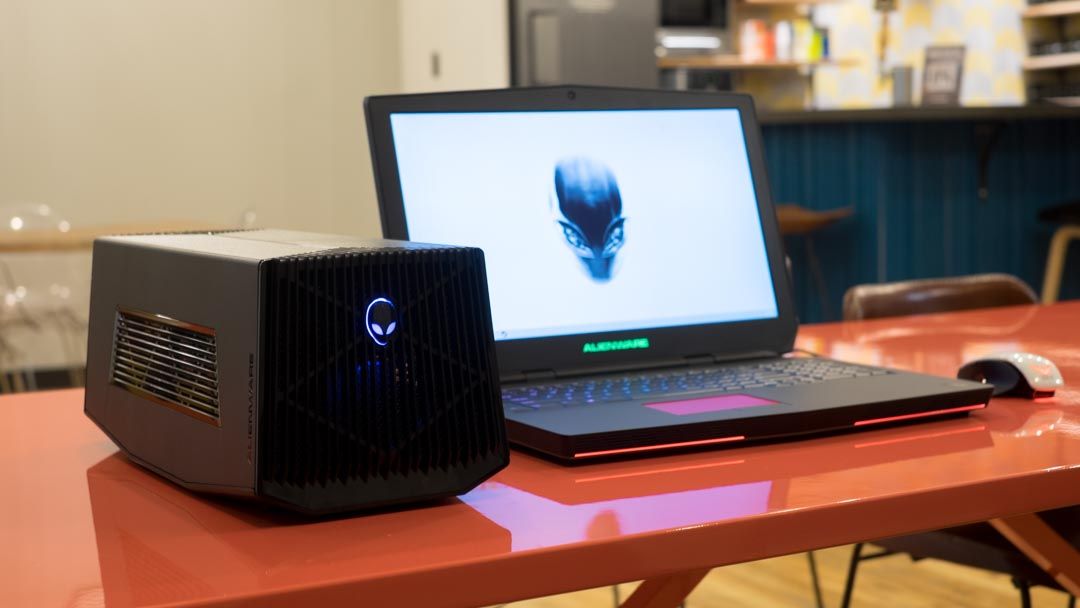
2. Alienware 17 (2015)
Expandable graphics means having it both ways
CPU: 2.5GHz Intel Core i7-4710HQ | Graphics: Nvidia GeForce GTX 980M; Intel HD Graphics 4600 | RAM: 16GB DDR3L | Screen: 17.3 inch, Full HD (1,920 x 1,080) IPS anti-glare | Storage: 256GB SSD; 1TB HDD
See more Alienware 17 (2015) deals
Graphics Amplifier gives enormous flexibility But it’s just one more thing to lug around
The Alienware 17 (2015) is a fine choice for anyone looking for a VR-ready laptop, even if the laptop needs a little help. The Graphics Amplifier allows you to hook up a desktop graphics card to the computer itself, meaning the lofty graphics card requirements for both the Vive and Oculus are attainable.
In some ways, the Amplifier is a better fit than a laptop running a desktop GPU. While an increasing number of laptops have managed to cram a full desktop GTX 980 into their confines, technically Oculus and Vive only need a GTX 970, so you don’t need to go all-out to hit those minimum specs. It could be a win-win.

3. MSI GT80 Titan
A truly monstrous mobile gaming rig
CPU: 2.6GHz Intel Core i7-4720HQ | Graphics: 2 x Nvidia GTX 980M SLI; Intel HD Graphics 4600 | RAM: 16GB DDR3L | Screen: 18.4-inch WLED FHD (1,920 x 1,080) anti-glare | Storage: 256GB SSD; 1TB HDD
Expandable Powerful Roughly the size of a small barge Battery life is the pits
The aptly-named MSI GT80 Titan shouldn’t have any problems running VR applications, although remember: minimum specs for Oculus and Vive call for a GTX 970. The dual GTX 980M GPUs running in SLI should make up the difference between mobile and desktop GPUs, and the rest of the innards shouldn’t bat an eye.
Unfortunately, high-powered laptops suffer from quickly-drained batteries, and the MSI GT80 is no exception. At just under 2 hours, it’s actually on the lower end of the battery-drain bell curve, so you’ll need to do your virtual reality explorations close to an outlet. Since the headsets require being tethered to the computer anyway, what’s one extra connection?
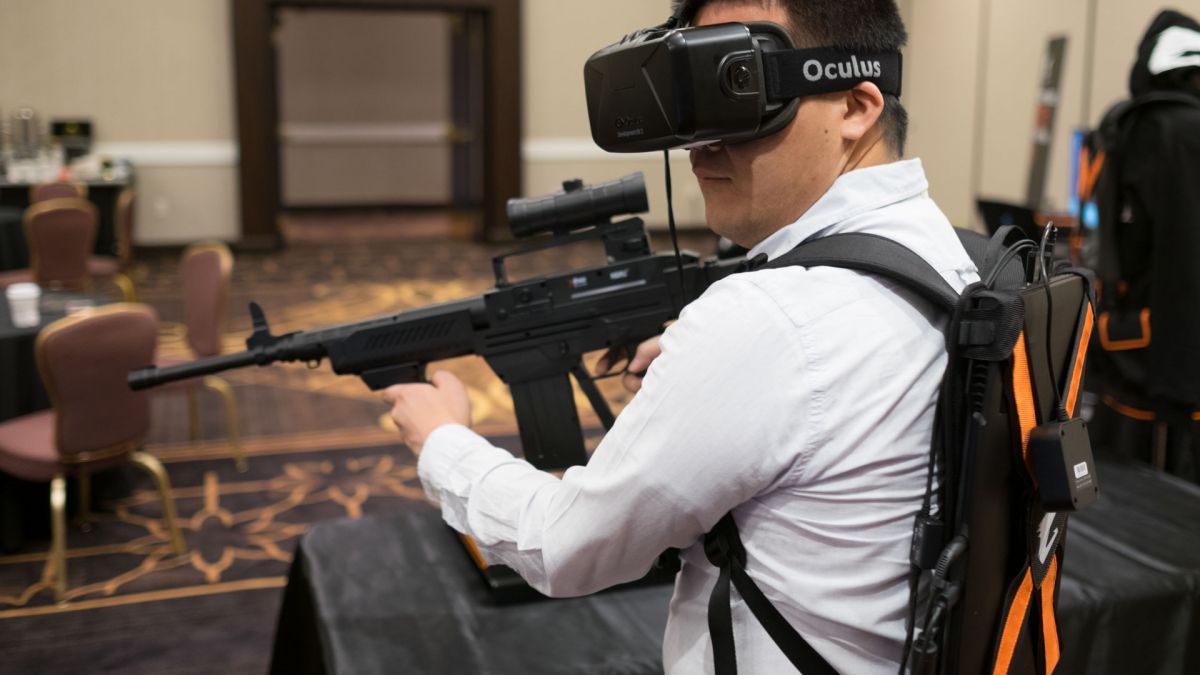
4. Aorus X7 DT
Designed with portable virtual reality in mind
CPU: 2.6GHz Intel Core i7-6700HQ | Graphics: Nvidia GTX 980 | RAM: DDR4 compatible | Screen: 17.3 inches | Storage: SSD compatible
Desktop GPU with plenty of RAM Weighs 10.5 pounds Another battery guzzler
The Aorus X7 DT (seen above inside a backpack) hasn’t been released yet, but we did have a chance to go hands-on with it back in January. The event was designed to show off the virtual reality capabilities of Aorus’ new laptop, and it did so admirably.
On top of either an i7-6700HQ or 6820HK processor, the Aorus X7 DT sports a desktop GeForce GTX 980. What’s more impressive than its powerful potential is that it packs it into a slim form factor. The Aorus X7 DT can even be strapped into a backpack and carried during play, allowing you to wander freely around an open space in both the real and virtual worlds.
One thing we noticed in our hands-on testing was the Aorus X7 DT suffers the same poor battery life as most other powerful laptops. However, a high-spec, VR ready laptop that straps to your back is pretty damn cool, even if you can’t wander too far before it needs to be charged.
Read the hands on review: Aorus X7 DT
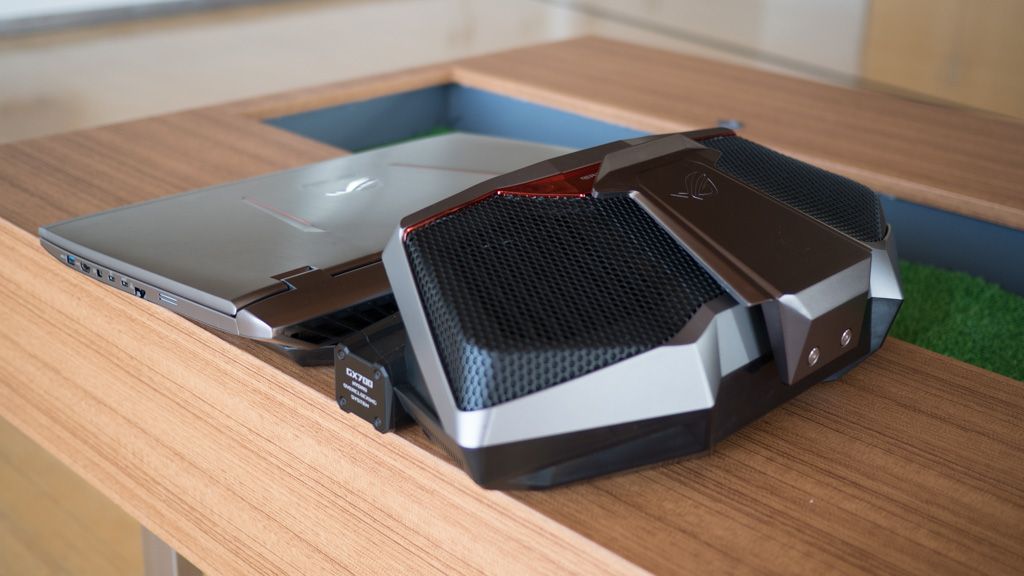
5. Asus ROG GX700
A water-cooled, futuristic dream
CPU: Intel Core i7 6820HK | Graphics: Nvidia GTX 980 | RAM: Up to 64GB DDR4 | Screen: 17.3 inches up to 4K with G-Sync | Storage: Up to 1TB SSD
Water-cooling allows for crazy performance Water-cooler is crazy bulky
The Asus ROG GX700 is another out-there, yet-to-be-released laptop that looks everything the part of the virtual reality dream. It’s a futuristic, sleek laptop that can be locked into a water-cooling dock to significantly boost its performance.
Seriously, the water cooler looks like a device straight out of science fiction, so donning a virtual reality headset wired into the Asus ROG GX700 is about as close as we’ve come yet to realizing Daft Punk’s techno vision of the ’90s.
Connecting the cooling unit to the main machine allows you to overclock the Intel Core i7 6820HK processor and desktop-grade Nvidia GTX 980 graphics chip, already perfectly capable on their own. Keeping everything cool while overclocked allows for some seriously immersive visual capabilities.
Read the hands on review: Asus ROG GX700
Source: techradar.com









































